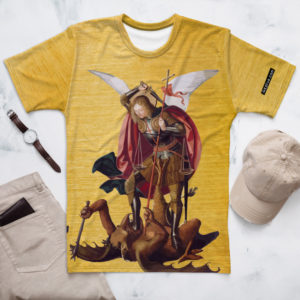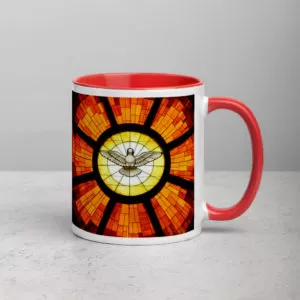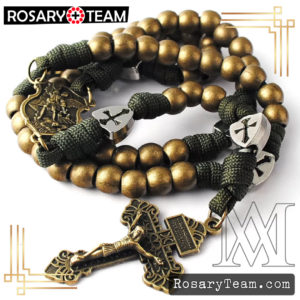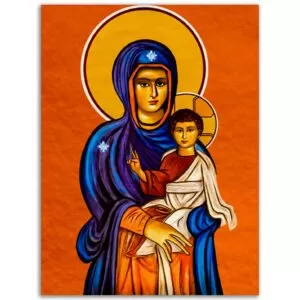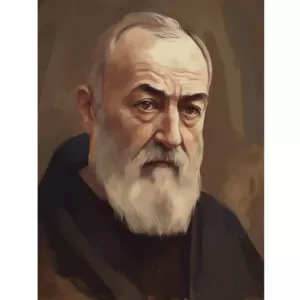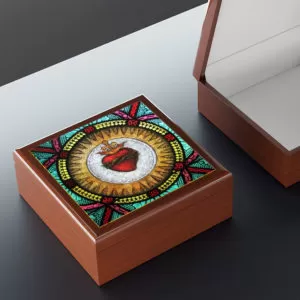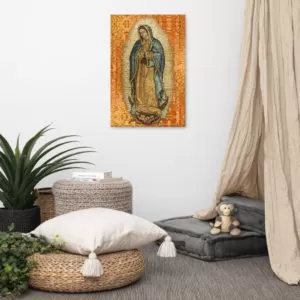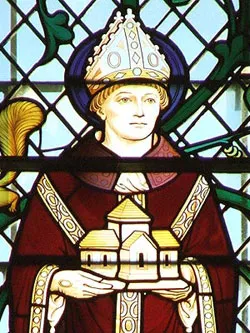SAINT MAXIMILIAN KOLBE
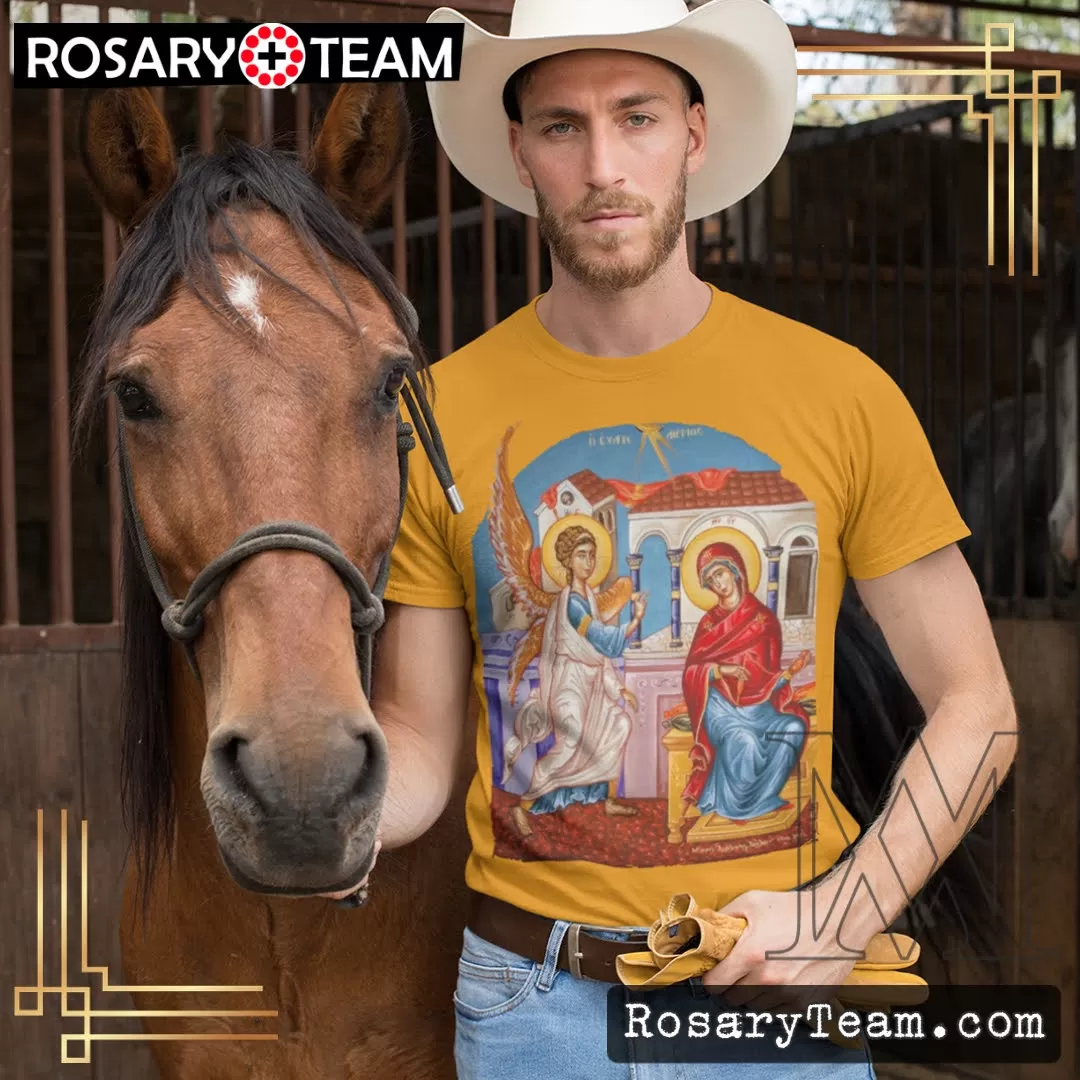
SAINT MAXIMILIAN KOLBE
Apparition|
Religious Life|
Militia|
Marytown|
Crown Bestowed
Apparition
Our Lady’s apparitions occurred shortly after the turn of the present century. It happened in Poland. The ten year old child who received this exceptional blessing was not exceptional himself. He was as mischievous as any other boy of his age. His name was Raymond Kolbe, born January 8, 1894.
Maria Kolbe began to observe her son spending long hours at their little altar of Our Lady of Czestochowa praying and weeping. Concerned about what was troubling the boy, she asked him what was the matter. Raymond was reluctant to open his heart until his mother insisted that he tell her under pain of disobedience. Then he confided that her critical question about the hope for his future: “I felt very sad and went to the Blessed Virgin and asked Her what would become of me. The Blessed Virgin appeared to me, holding two crowns. One was white, and the other red.” The white crown represented purity, and the red one martyrdom. Our lady then asked him which he would choose. “I choose them both,” was his answer. The vision was brief, and the only apparent instruction that Our Lady gave Raymond was that he be obedient and She would take care of everything else.The Queen of Heaven then smiled and disappeared. Maria Kolbe became the only person to share the beautiful secret of this future saint before his death.
Religious Life
A local pharmacist and Raymond were admitted to a minor seminary in Galicia, run by Conventual Franciscans. His younger brother Joseph followed them three years later. With all
three of their children in the seminary, both parents decided to enter religious life and devote themselves to God.
In 1910 he was received into the novitiate of the Conventual Franciscans, taking the name Maximilian as a religious. The following year he was sent to study philosophy at Krakow, Poland where his superiors realizing his exceptional capabilities decided to have him complete his studies at Rome. There he had the opportunity of seeing Pope Pius X in public audiences. Friar Maximilian studied at the Gregorian Institute and the International Seraphic College where he was to earn his doctorates in philosophy and theology. In 1914 he took his solemn vows, adding “Maria” to his religious name. Four years later he was ordained to the priesthood.
Militia of the Immaculate Mother
Deeply grieved by many symptoms that the Church steadily was losing ground in her battle against the devil Saint Maximilian determined in his heart to organize a spiritual army to capture souls for the Immaculate Queen. That inspiration came to him in 1917 on the anniversary of Our Lady’s apparition to Alphonse Ratisbonne, a Jew who was converted through the Miraculous Medal. The Freemasons began to spark their demonstrations raising their banners under the
windows of the Vatican. Banners which depicted on a black background Lucifer trampling
underfoot the Archangel Michael. When they started to distribute vicious tracts against the Holy Father, the idea to establish a company to fight the Freemasons and other agents of Lucifer was born.”
The specific aim of this company, this Militia of the Immaculata, he said, would be “to convert sinners, heretics, and especially Masons, and to sanctify all under the patronage and through the intercession of the Immaculate Virgin Mary.” Saint Maximilian later preferred the phrase “enemies of the Church,” over “Masons” so as to include Communists and all other groups besides Masons who sought her ruin. To be a Knight of the holy Militia would require “total consecration of self to the Immaculate Virgin Mary as an implement in Her Immaculate hands” and “wearing the Miraculous Medal.”
On October 16, 1917, Saint Maximilian and his six founding members met and enrolled themselves as Knights of the Immaculata. The meeting was similar to one that took place four hundred years earlier in a small chapel on Montmartre, where Saint Ignatius net with six divinity students and founded the Society of Jesus. But particularly mystical was the fact that this founding meeting of the Militia Immaculatae was held three days after the miracle of the sun had occurred at Fatima, where the Blessed Mother promised the conversion of Russia and the triumph of Her Immaculate Heart. Young Kolbe was unaware of the great miracle at the time. But he himself was to predict late in his life: “One day, you will see the statue of the Immaculata
in the center of Moscow atop the Kremlin.”
Saint Maximilian left all major decisions of strategy for the Militia to Our Lady. Whenever he went among the public, he seized every opportunity for making a convert. After giving some soul the challenge of the Faith, he would present the person with a Miraculous Medal, leaving it to Our Lady to finish the job.
Penance was another powerful weapon for the Crusade and Saint Maximilian utilized it
expertly. Shortly after he came to Rome he began to suffer terrible headaches. He also contracted tuberculosis. The doctors failed to diagnose the consuming disease and his lungs continued to deteriorate. In 1919 he had to enter a sanatorium, where he remained for two years. Father Kolbe had to trust Our Lady to govern the Militia in his absence. He converted a number of patients at the sanitorium and brought many others back to the sacraments using his little “bullets,” Miraculous Medals. In January of 1922 the Militia’s first monthly periodical, the Knight of the Immaculate Mother, made its appearance.
The First Marytown
Father Kolbe built up the circulation of the Knight to 70,000 subscribers amazing all his
skeptical associates who predicted the publishing operation would fail completely. Interest in his Crusade increased so greatly that total membership in the Militia rose to 126,000 by 1927.
Mary provided the solution by sending an angel, Prince Drucki-Lubecki, who presented as a gift to the Militia a sizable piece of his estate near Warsaw. With building materials that also had been donated, the religious brothers erected simple barracks on the site and on the Feast of Our Lady’s Presentation, November 21, 1927 the printing plant was moved from Grodno. Two weeks later, on the Feast of the Immaculate Conception, the new home for the Militia was given the name Niepokalanow – “Marytown.”
The city had facilities for manufacturing machinery and replacement parts. Father Kolbe had plans to build his own paper mill and an airfield to expedite production and delivery. Two of his friars were already taking aeronautical training at Warsaw when the war broke out. On the Feast of the Immaculate Conception in 1938, he opened Radio Station SP3RN, whose call letters stood for “Polish Station 3 Radio Niepokalanow.”
In 1931 he opened at Nagasaki another city called in Japanese Mugenzai no Sono –
“Garden of the Immaculata.” And the following year he went to India to establish still another mission base. In 1936 because of his health he returned to Poland.
The Red Crown is Bestowed
When the Germans invaded Poland in 1939, Saint Maximilian was ordered to cease his
publishing. Niepokalanow then turned its attention to treating the war injured. The Gestapo arrested Father Kolbe and imprisoned him at Amtitz. He was released but only to be arrested again on February 17, 1941. This time he was sent to the dreaded Auschwitz, and there under an inhuman monster of a commandant named Fritch, he became known as Prisoner Number 16670.
The roll call one July morning at Block Fourteen where Saint Maximilian was being kept revealed that a prisoner had escaped. Commandant Fritch’s policy in such cases was to assemble all the prisoners from the block in the yard where they would stand at attention the whole day. If the escapee had not been recovered by the end of the day ten others would be chosen at random to die in his place.
By three o’clock the prisoner was still not found and Fritch selected his victims. One of them, Francis Gajowniczek, cried out, “My poor wife, my poor children! What will happen to my family!” A reply came: “I am a Catholic priest from Poland. I would like to take his
place, because he has a wife and children.”
The commandant appeared unable to speak. After a moment he gave a sign with the hand. He spoke but one word: ‘Away!’ Gajowniczek received the command to return to the row he had just left and Father Maximilian took the place of the condemned man.”
From the hour that Father Kolbe descended into the starvation bunker a great change came over the horrible place. Its keepers testify that the wailing and cries of suffering that earlier
reverberated off the bunker’s walls were now converted into prayers and hymns. The change
was seen throughout the whole camp. Beatings were less frequent and less severe after the holy man’s sacrifice. Even Fritch himself took no more hostage – victims to die in the place of escapees.
“Never before,” said the guards, “have we seen anything like this.”
When they made their morning rounds at the bunker to remove starvation – consumed corpses,
they would find among the heaps of agonized, half-dead victims one who was always in prayer on his knees or standing, one who was always bright and fully conscious, one who was always peaceful and well kept. That one was Father Kolbe. “As if in ecstasy, his face was radiant. His body was spotless, and one could say that it radiated light,” an attendant reports. “I will never forget the impression this made on me.”
After two weeks, the saintly priest was still alive and in this same beautiful state. The Germans needed the cell and could wait no longer for him to die. On the morning of August 14, 1941, the director of the infirmary came with a syringe loaded with a lethal dose of carbolic acid. Upon entering the saint’s cell, Maximilian offered the executioner his arm for the injection, and with it the frail remnant of his life for God. The next day, on the Feast of Our Lady’s Assumption, the body of Saint Maximilian Maria Kolbe was cremated, thus ironically fulfilling his dearest dream of immolating himself completely: “I would like to use myself completely up in the service of the Immaculata, and to disappear without leaving a trace, as the winds carry my ashes to the far corners of the world.”
rosary.team


